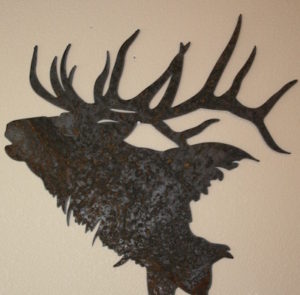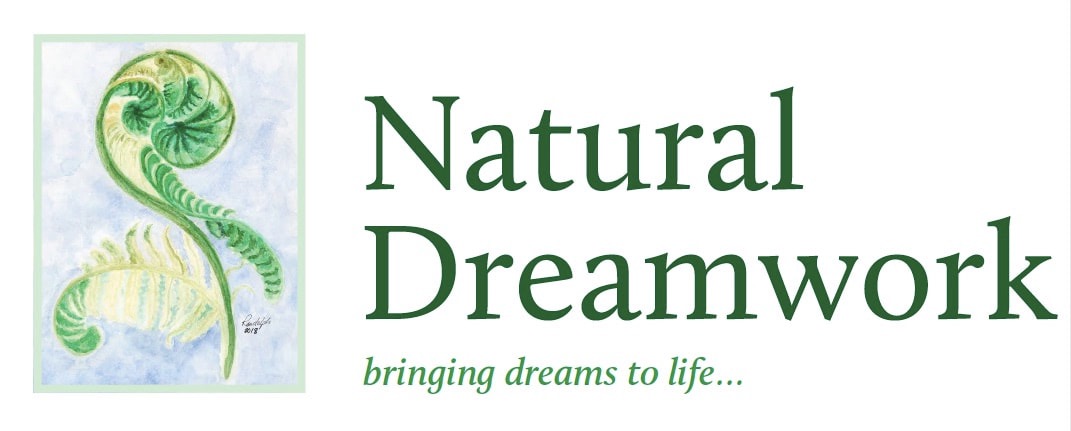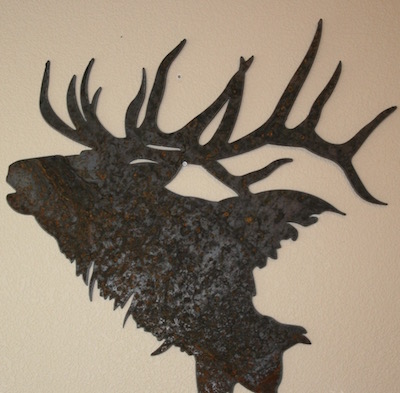
(sculpture by fit design)
Early on in our work together one of my clients, “Nina” presented this dream, which we called “THE WOUNDED ELK”.
Dream – I am walking along an upper balcony of what feels like a hotel. Off the balcony I see a large elk lying on the ground being attacked by another elk; his side is opened up and bloody. A large crowd watches. A young man walks back to a waiting car carrying the elk’s bloody rack of antlers. I am horrified. From the balcony, I yell, “that’s against the law!” It turns into a chant that the others pick up…in unison they chant, “that’s against the law”.
In session Nina helpfully explained that, “Where I live it’s against the law to remove antlers from a national park.”
In Natural Dreamwork we try to separate out what I call the dream event from the client’s story. In this case, what is the event and what is the story? We can get distracted in the tangle of the client’s story, and end up talking about National Park regulations. Or we can zero in on the event. By an event I mean a moment of intense encounter between the dream ego and an object or a presence (an image or imago).
Finding the event is clear if we focus on intensity of feeling and vividness of image; it’s the wounded elk. Notice the wounded elk might be easy to miss because it is one short sentence buried in a narrative. But this moment carries the most potential for feeling– if it is fully seen.
Yet Nina as dream ego doesn’t see it very clearly.
To recover the encounter from the welter of narrative, the phenomenological approach of Natural Dreamwork is helpful. In session, the dream practitioner pays careful attention to the presentation of space, time and feeling in the dream– as the dreamer perceives it. (That is why we speak of phenomenology: it is the subjective experience of the dreamer we rely on.)
We want to know how far or how distant the dream-ego is from the event, and how much time the dream-ego spends with the event. Quite simply, when we are up close and spend time with an event, the feeling intensifies. When we perceive it as at a distance, or spend little time with it, the feeling attenuates. These measures of space and time are completely implicate with intensity of feeling. That is why, just as physicists speak properly of four dimensions of space-time (rather than 3 dimensions of space and one of time), so in Natural Dreamwork we speak of 5D dreamwork–five dimensions of space-time-feeling. The phenomenological experience of space, time and feeling aren’t really separable in a dream.
So here we can note that in spatial terms Nina stands above the event on a balcony. She is nowhere near ready to see the wounding up close– let alone touch the wound or smell it. And likewise she gives no time to it. She does not pause or take in or acknowledge the event. Instead she redirects her focus on the young man carrying away the antlers. She makes a story out of this deflection in which she’s standing up for the law and acting righteously and leading others in a chant.
In the session I had to make some effort to persuade her that she was missing the event the dream offered. Finally I asked her if she was really the enforcer of national park laws and she laughed. Then she could set aside the story-making and her heroic role in preserving antlers. Then I could return her to the image of the elk being wounded, opened up and bloody, and asked her to move closer to it. Now she could see it: the antlers plunging into the helpless elk’s belly, the blood. I asked her to gaze and gaze. Then she spontaneously recognized her own pain– which the image presented to her.
An image appears in my dreams as an event– and beckons to me to become an identity. The image wants to be my mirror, it wants me to see myself in it. But if I move quickly past it in a narrative rush, or if I stay far away, or above on the balcony of thought…then I get lost in story and reaction and never find the feeling that can open me up. I never see the bloody wound. And that bloody wound is the medicine.
Painful as the image is to gaze on, it is medicine. And to face into it becomes a healing encounter. All the story making that avoids that encounter, diverts the dream-ego from the underlying feeling of being wounded. But a wounded creature would never appear in my dream if a wound weren’t already present in my consciousness. The story-making spins away from the encounter and moves it away from the dream-ego–creating a narrative where “I” am blaming others instead of feeling my own pain.
The healing in a dream image depends on the dreamer actually seeing and feeling the image. But the medicine isn’t always delivered. The dream-ego distances itself, turns away, fails to notice or dwell on the image. The dream-ego may see the image, as Nina did in her dream and then react–making it about anything but her own feelings. The careful observation of space-time-feeling in the dream can help return focus on the event.
For the past fifteen years I’ve spent tens of thousands of hours talking to people about their dreams, with careful attention. I strongly believe that dreams have a capacity to heal. They carry a natural medicine. Over time certain techniques help us find that medicine and make use of it.
There is no new discovery here. It is in keeping broadly with Jung’s approach that dreams are natural phenomena.
We know that the body has natural healing processes that go on without our conscious participation. As soon as you skin your knee, the body mobilizes to heal. Within moments the wound closes , the bleeding stops, and a scab forms. White blood cells engage and destroy any harmful bacteria. Then fibroblasts produce collagen that builds new skin under the wound, forming a scar. Eventually the scar itself may gradually fade.
If there is a natural process for healing the body, what about for healing the psyche? Our reaction in waking life: guilt, shame, reactive anger–reappear in our dreams. And at a deeper level so do the feelings that underlie our reactions. If we are wounded dreams offer an image of our wounds and that leads into a natural process for healing. We are not all gifted artists or mystics but in dreams we can all immerse in a fundamentally creative and restorative process that the Romantic poets called primary imagination.
The dream is not as it appears to most casual observers, primarily a narrative of cause and effect. It is a movement of feeling.
The poet Frank O’Hara remarked, “Pain produces logic–which is very bad for you.” When we lose track of feeling, we end up in a logical narrative, full of worldly reference to National Park regulations and righteous indignation. But if we stay with the movement of feelings in the dream–if we stay with the actual events the dream presents, then the healing can come to us in an individual dream. And the healing becomes more thorough and deepens as we move from dream to dream along an arc of development. But that is a subject for another time.



